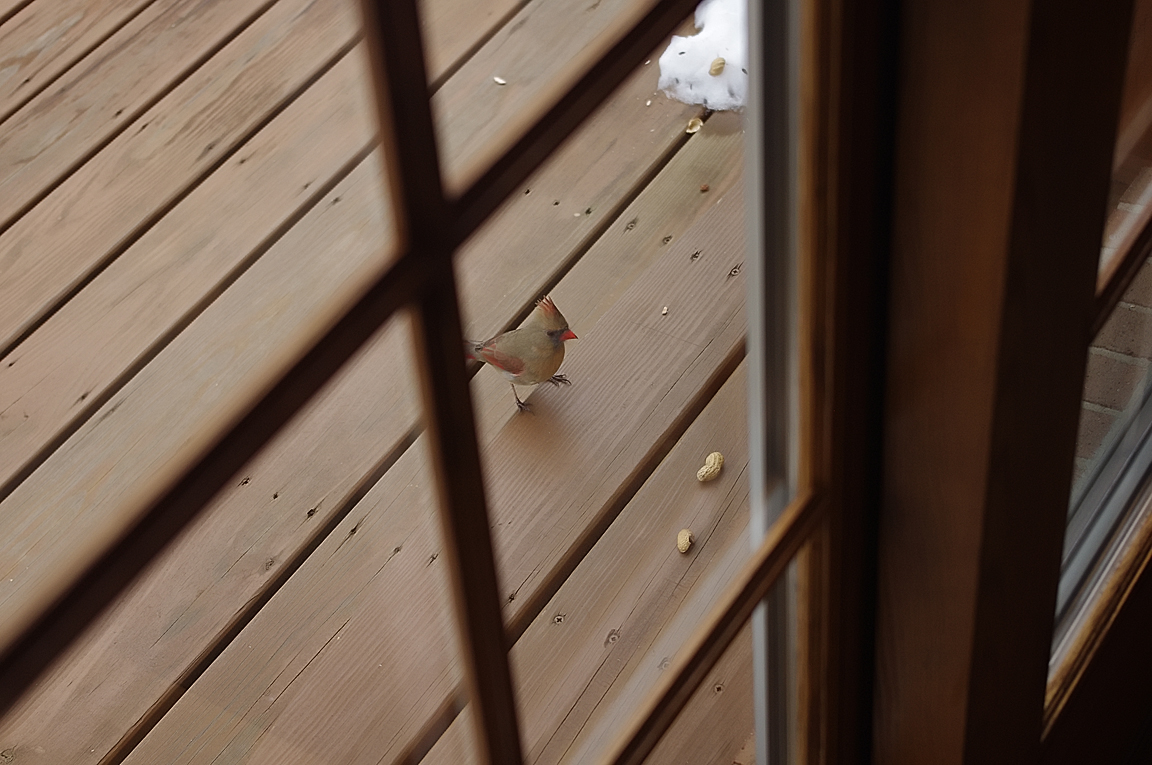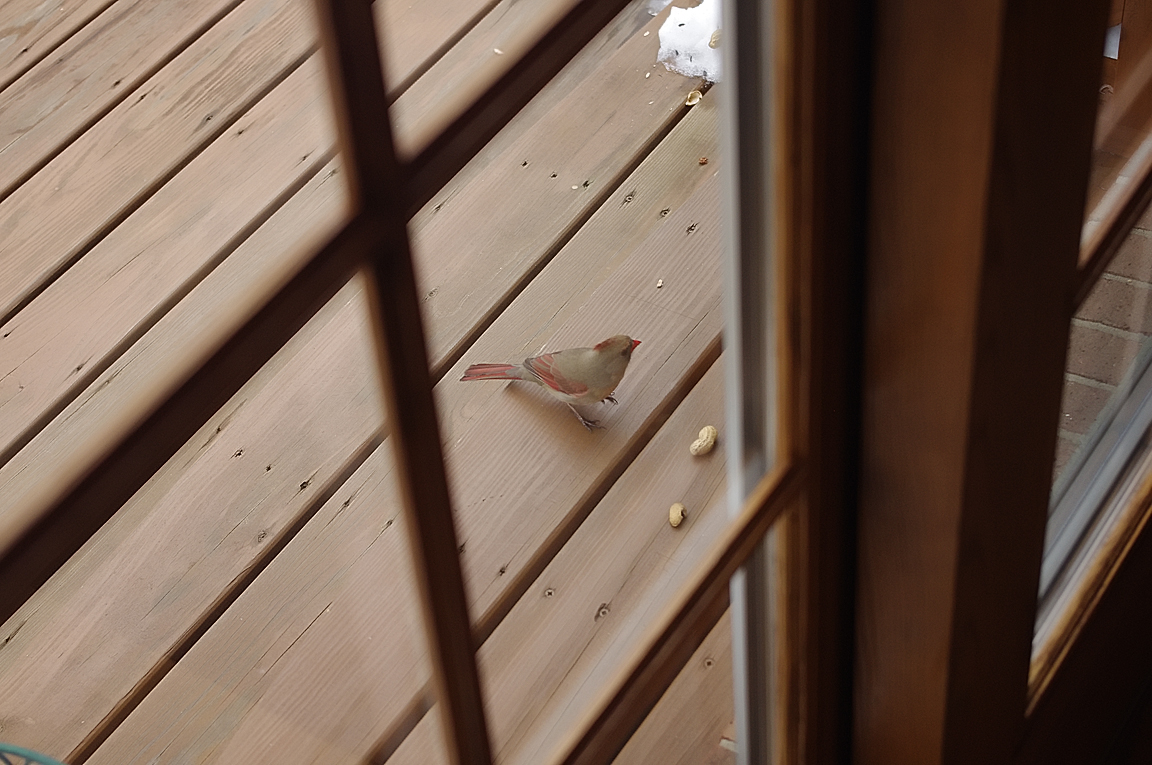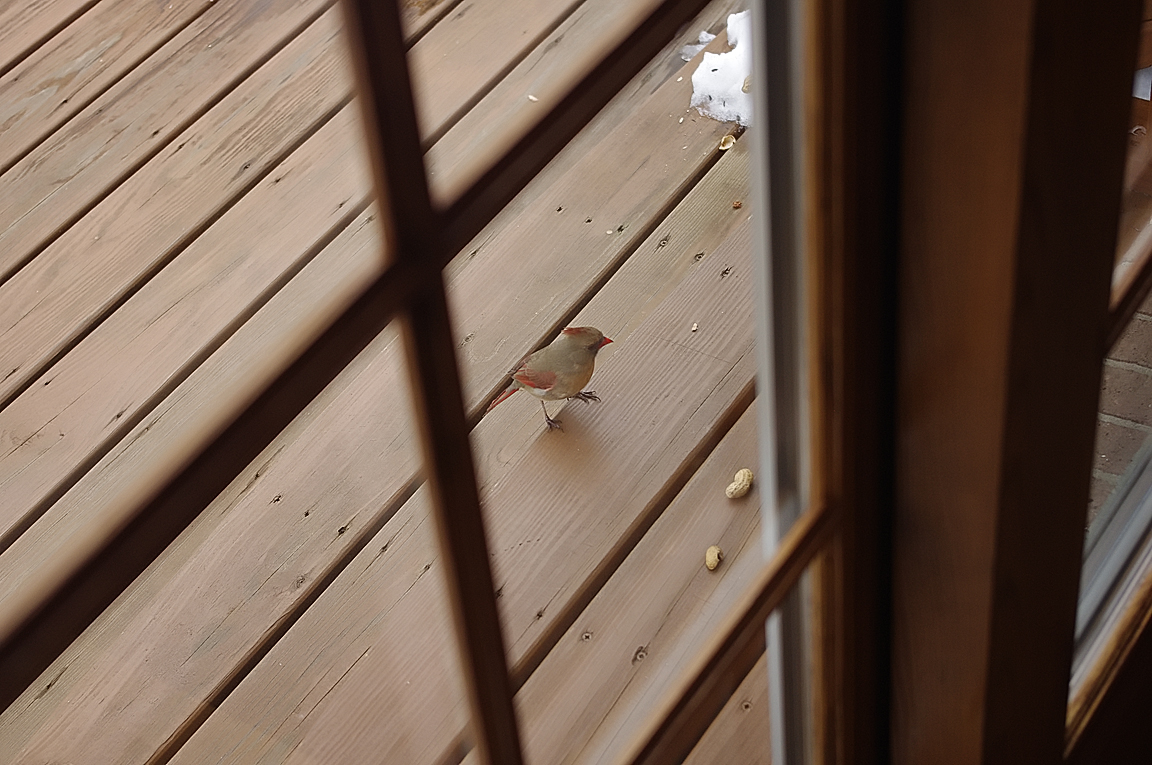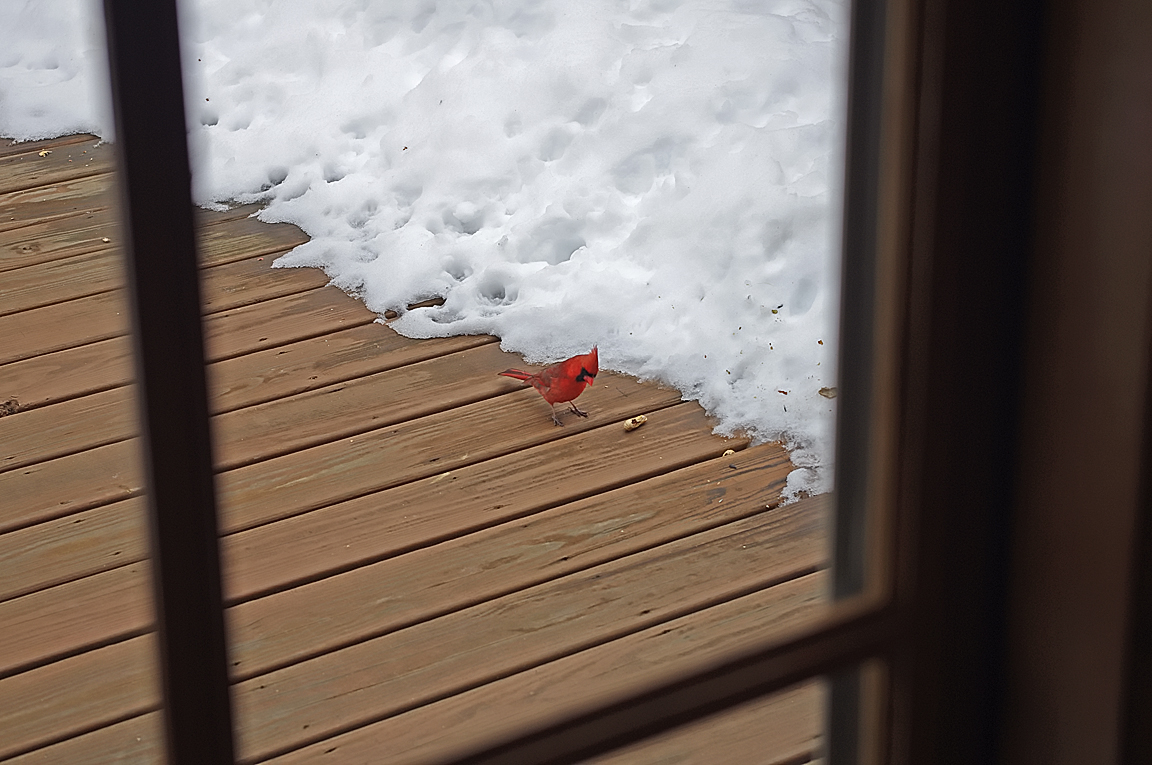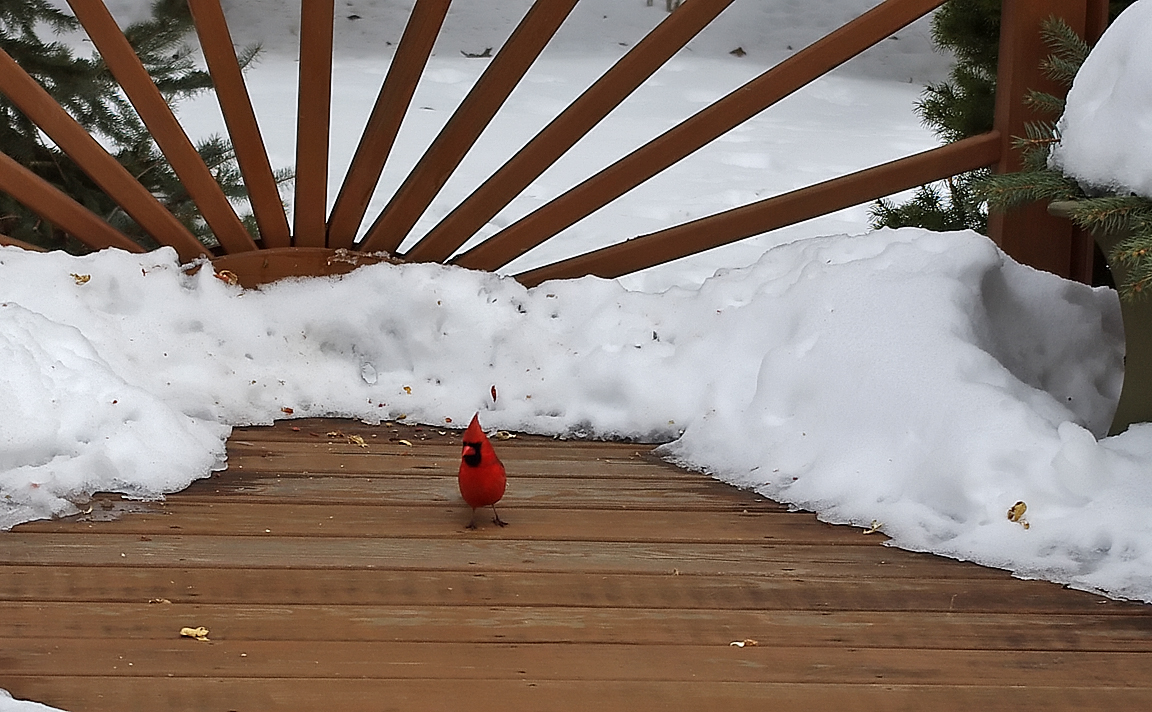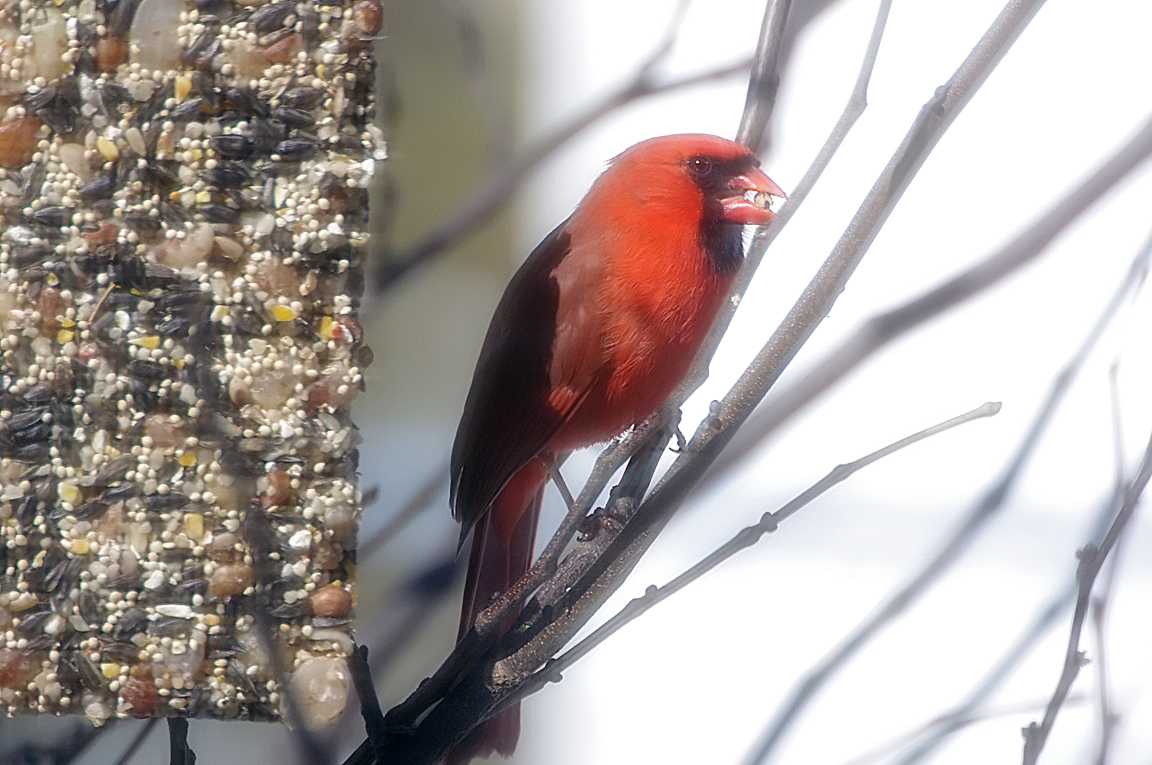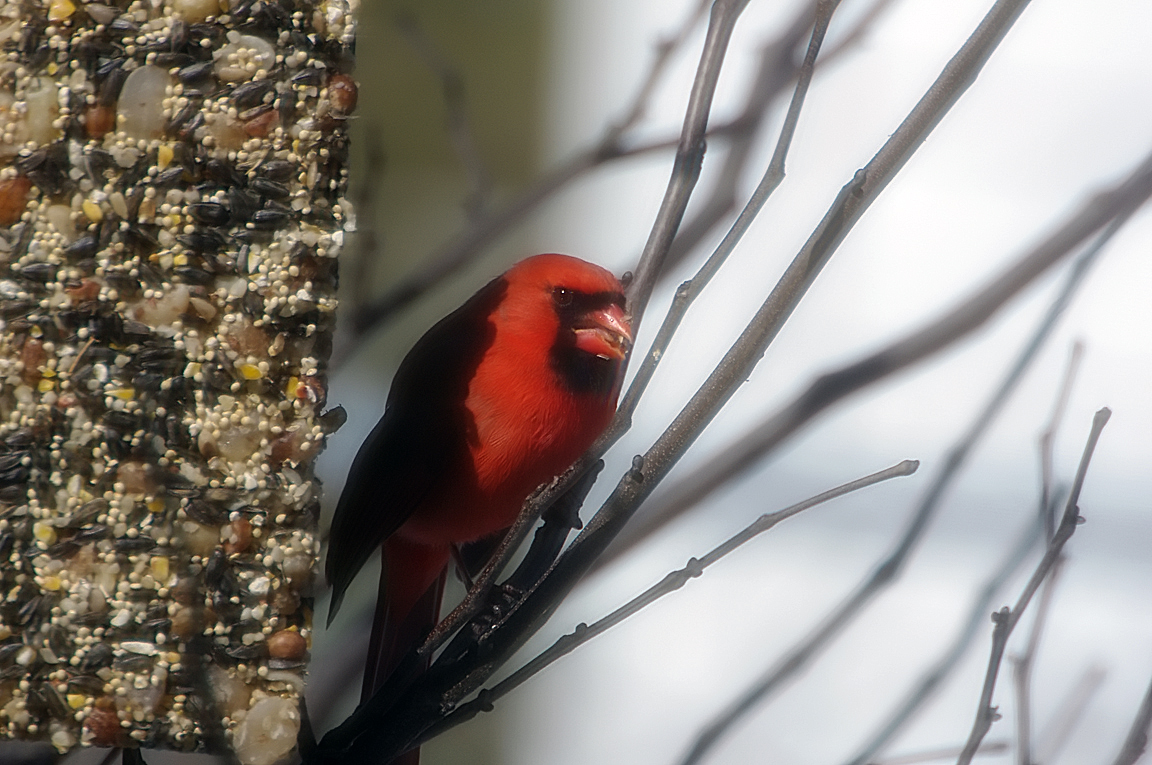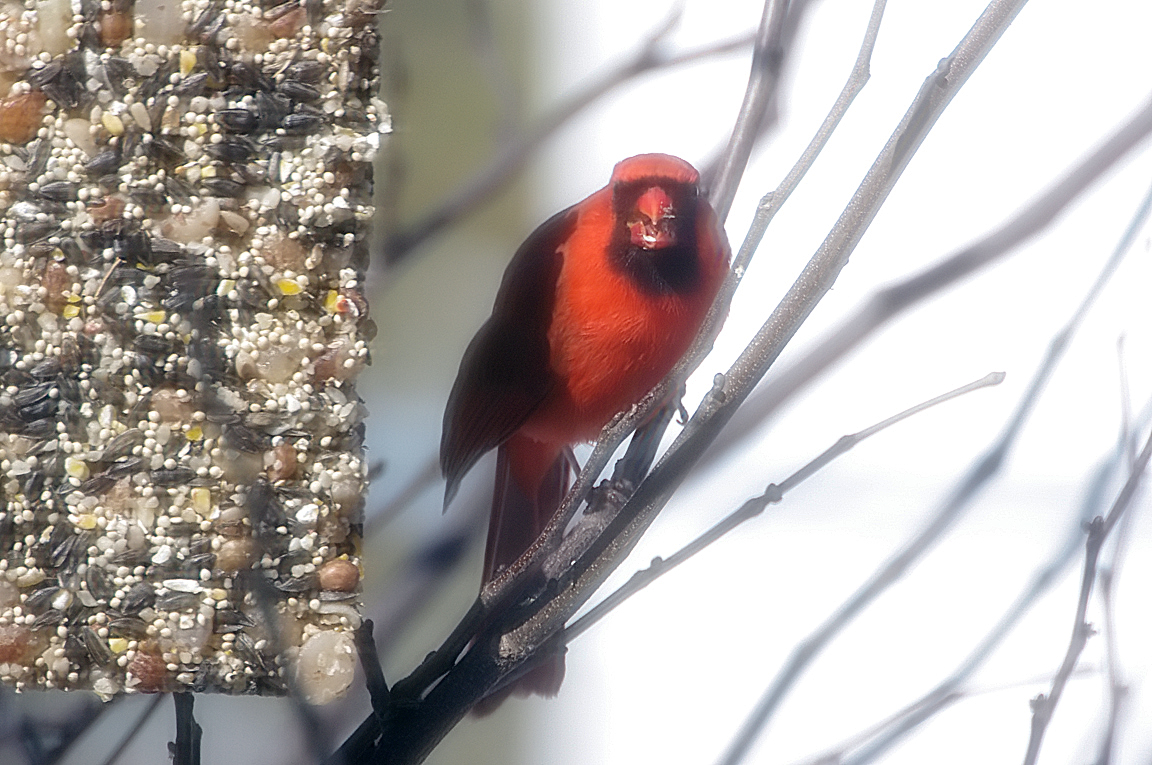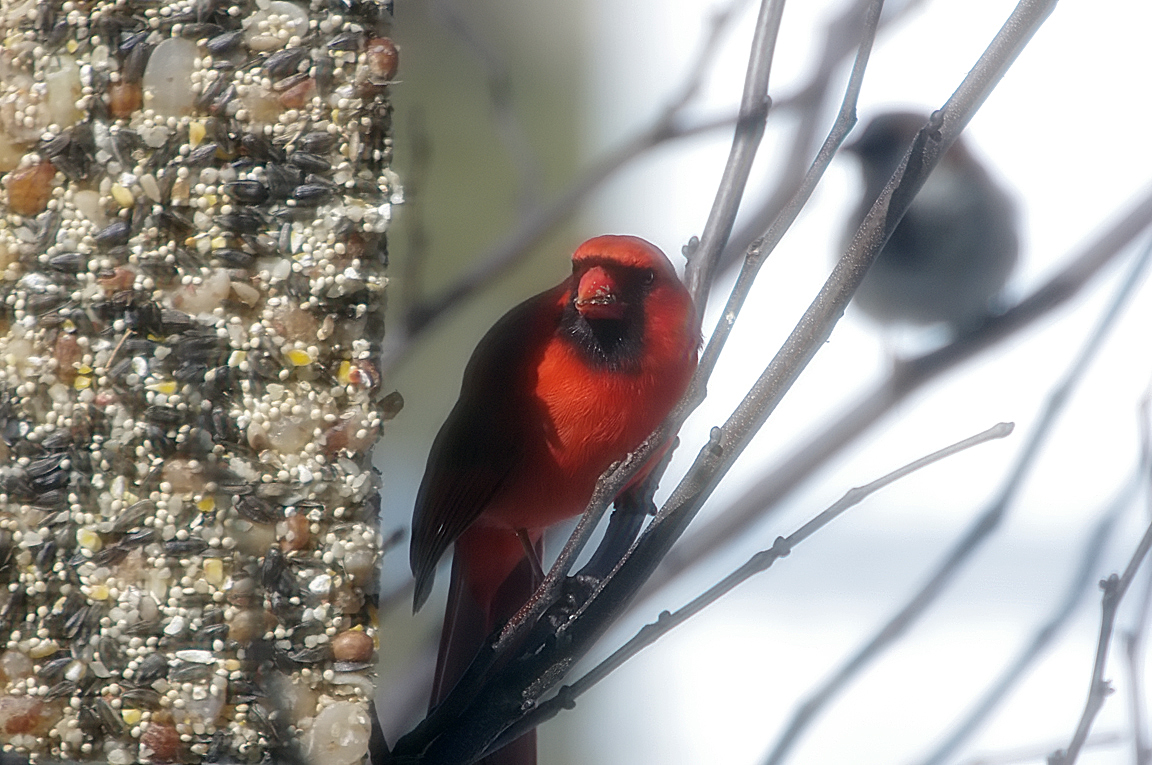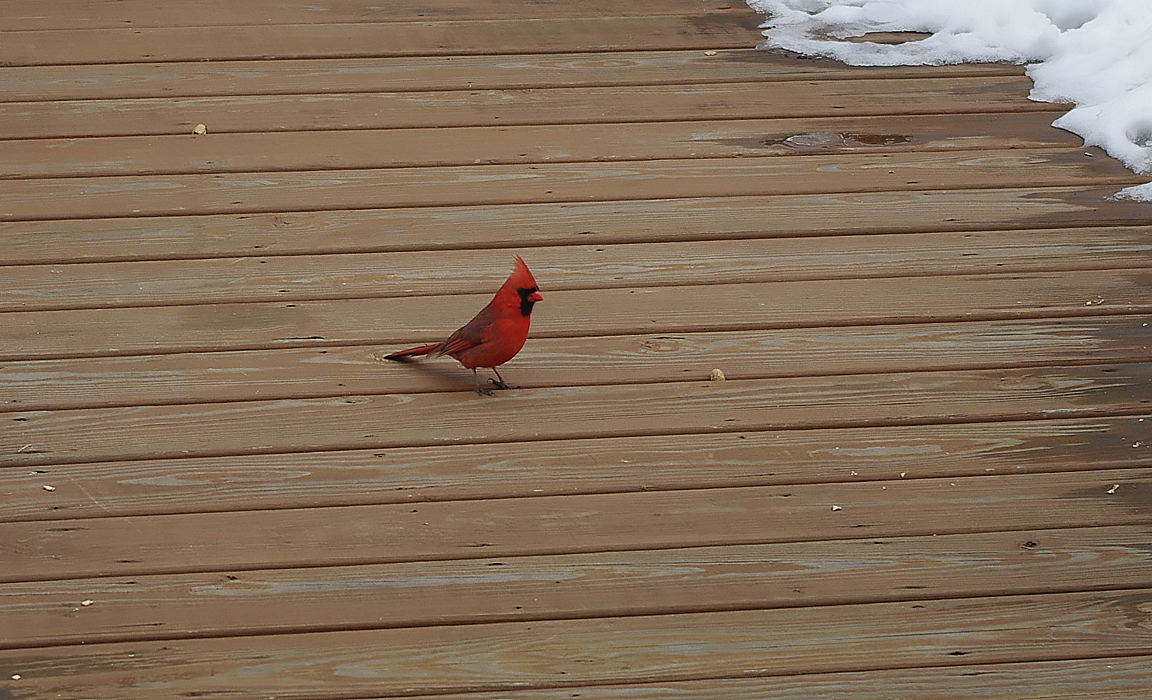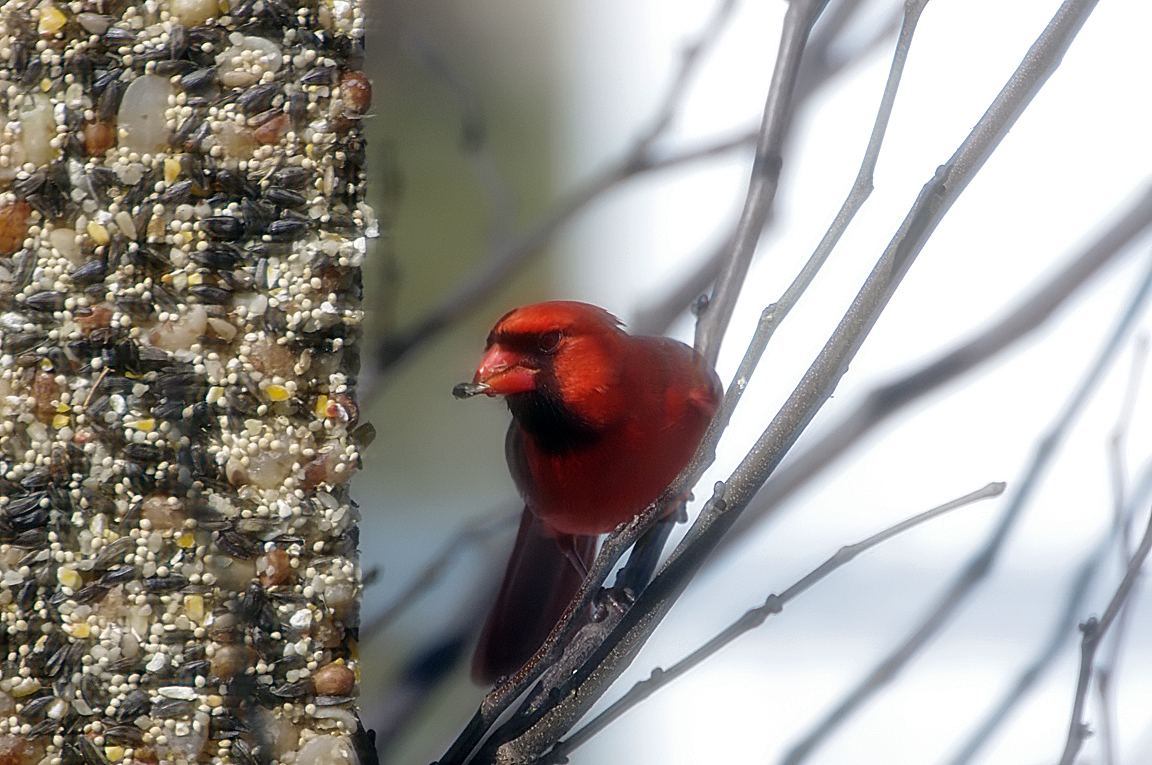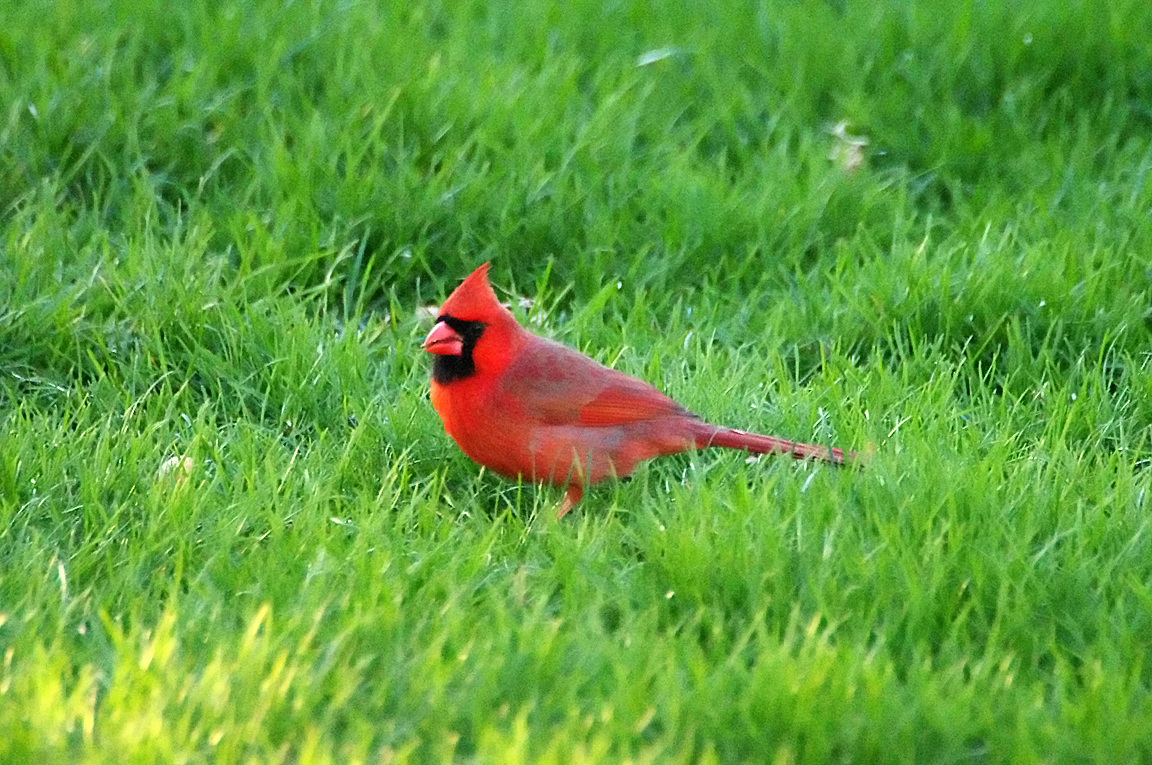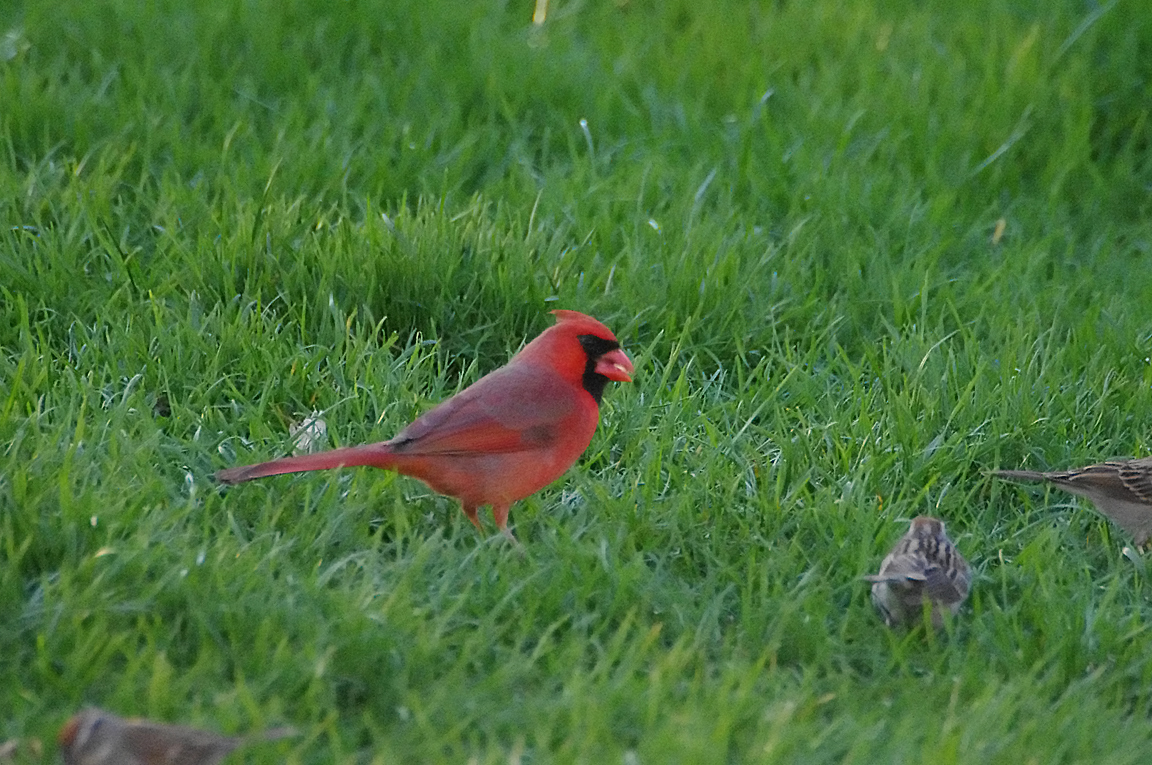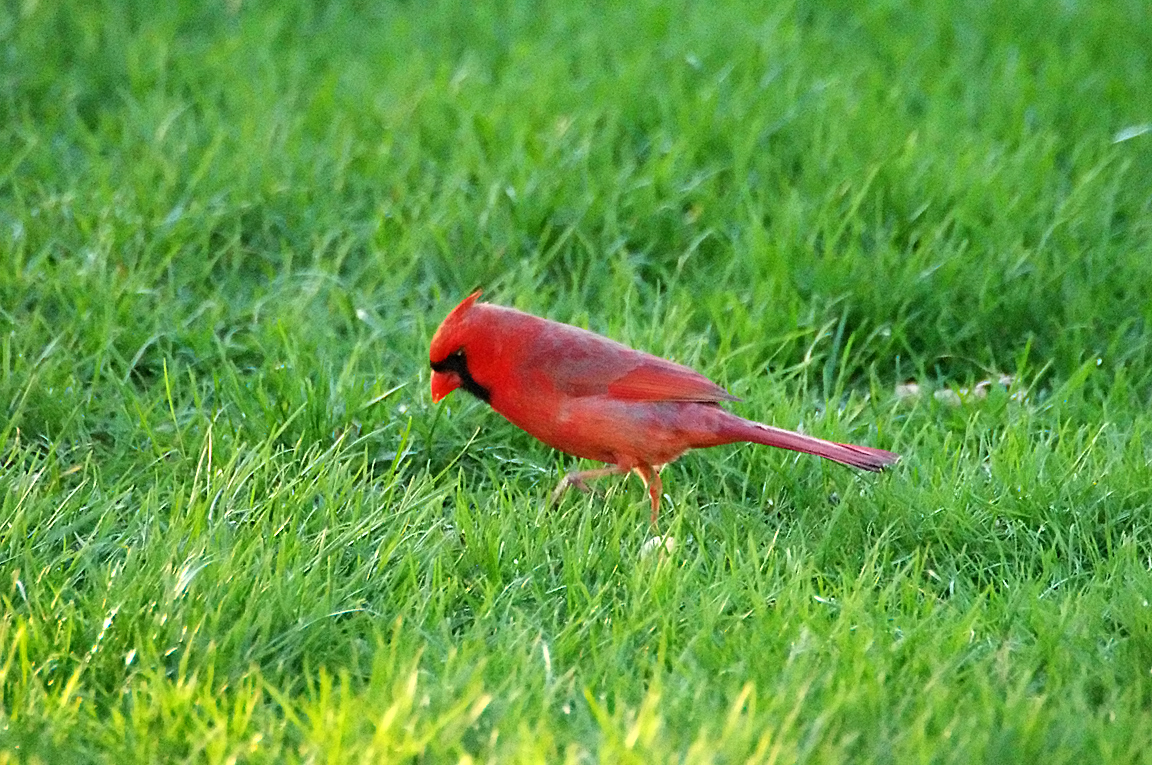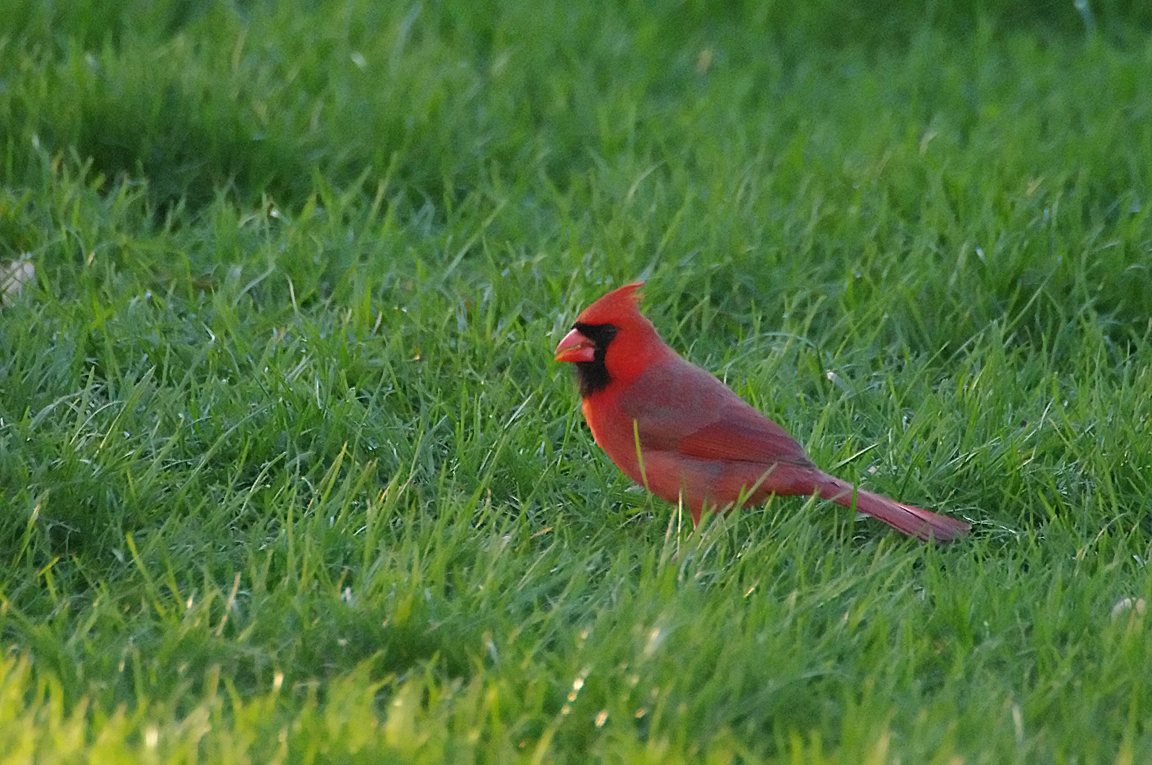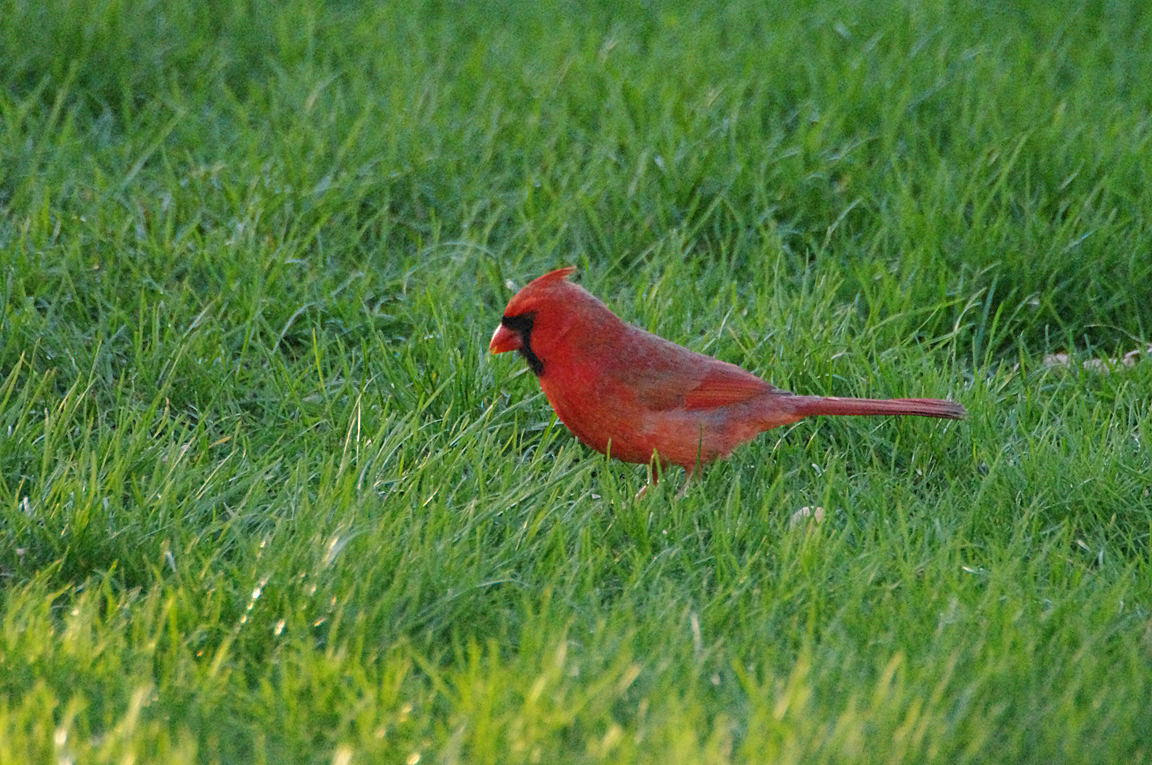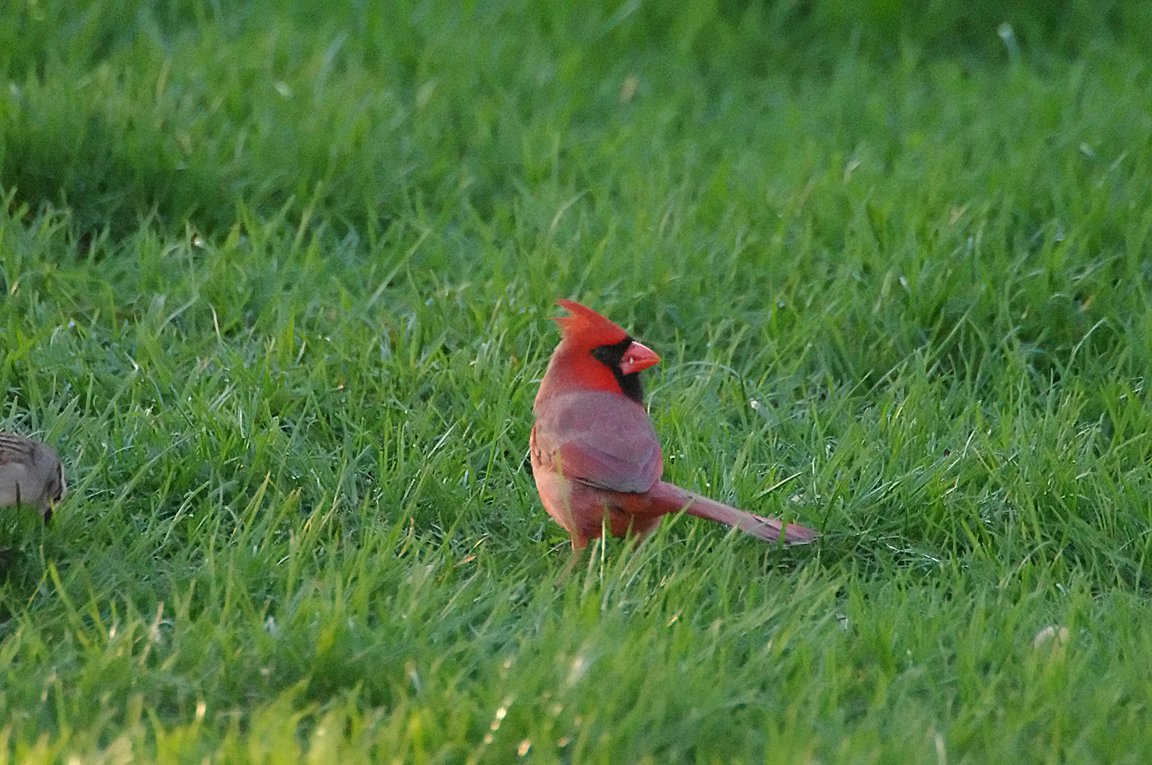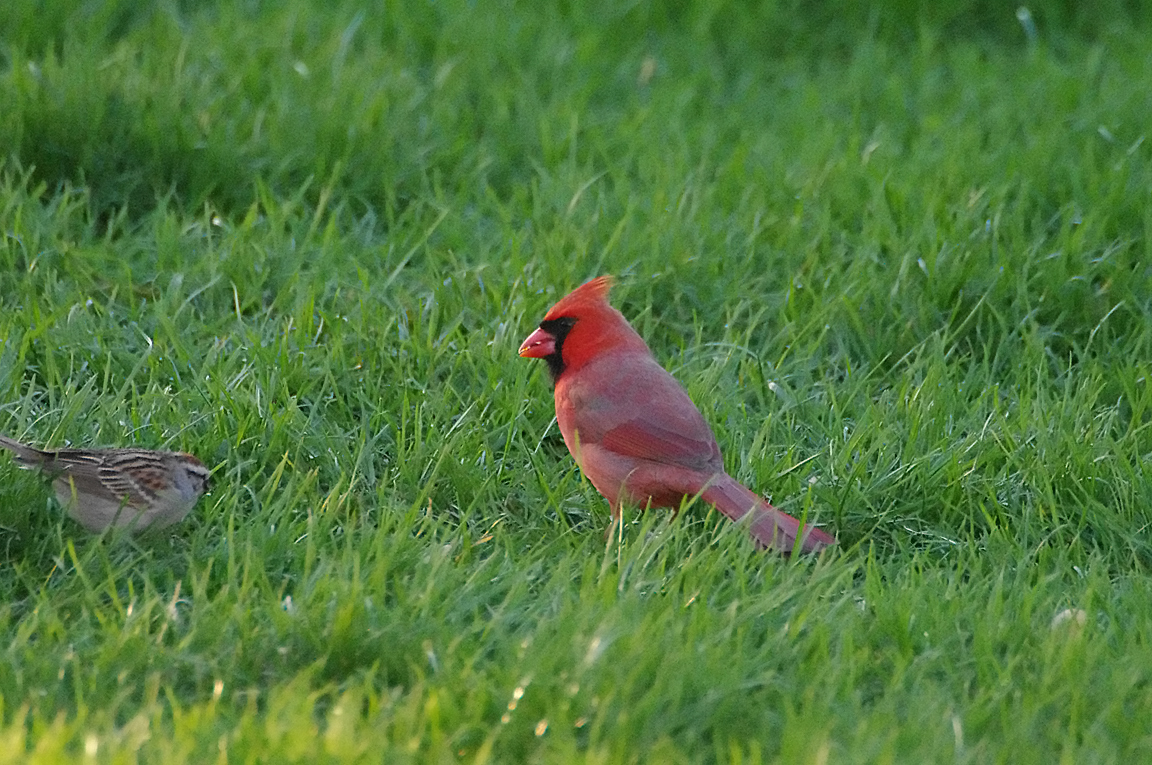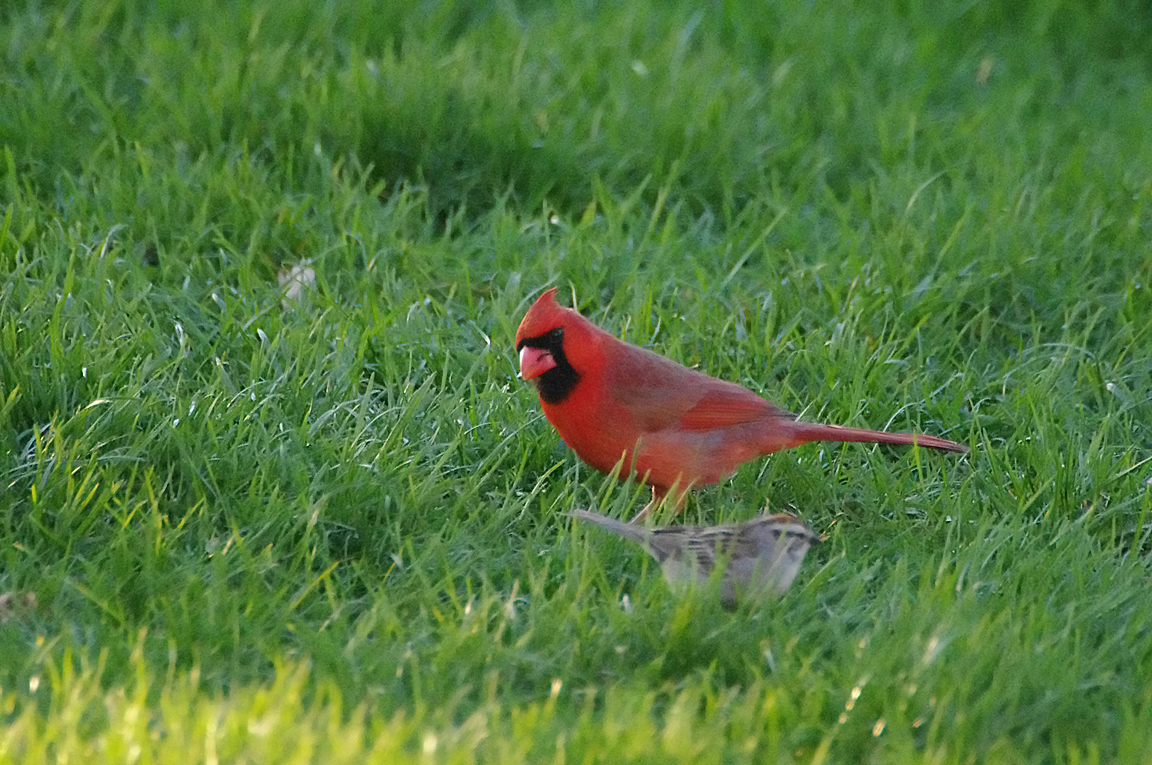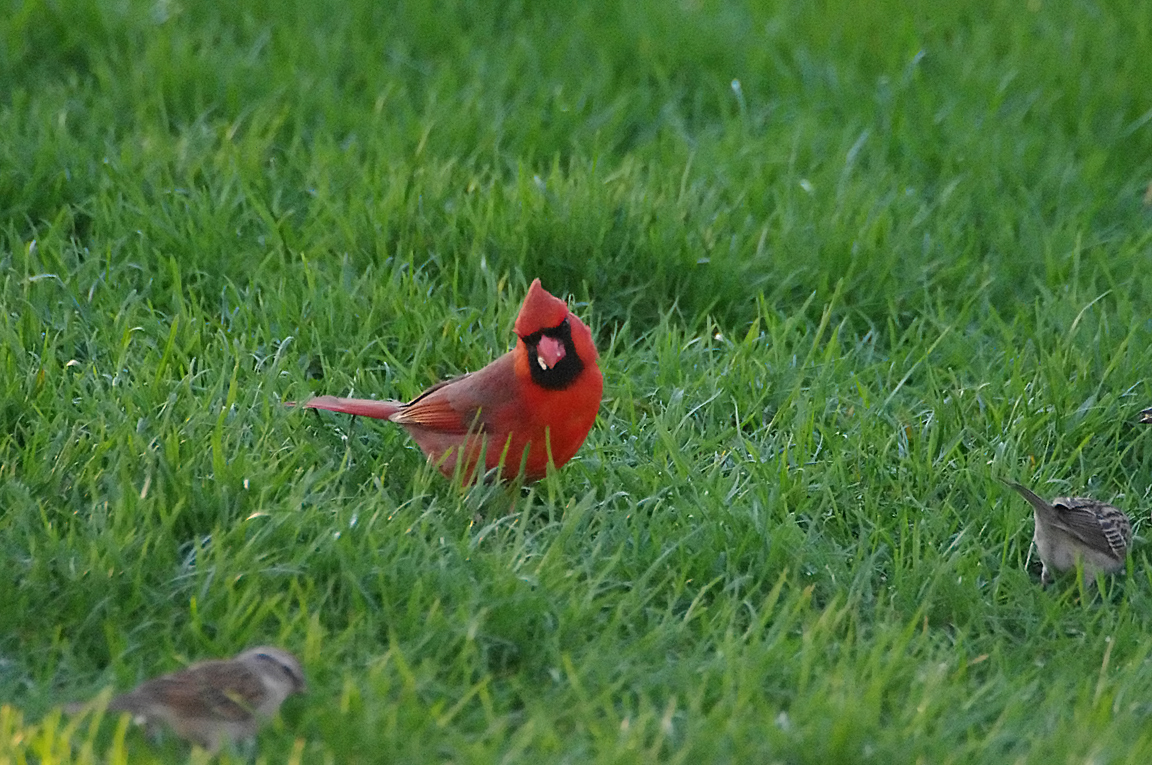|
|
|
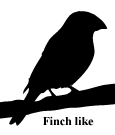 |
Northern Cardinal
|
| Cardinalis cardinalis | |
The male Northern Cardinal is perhaps responsible for getting more people to open up a field guide than any other bird. They're a perfect combination of familiarity, conspicuousness, and style: a shade of red you can't take your eyes off. Even the brown females sport a sharp crest and warm red accents. Cardinals don't migrate and they don't molt into a dull plumage, so they're still breathtaking in winter's snowy backyards. In summer, their sweet whistles are one of the first sounds of the morning.
Interesting Information
-
Only a few female North American songbirds sing, but the female Northern Cardinal does, and often while sitting on the nest. This may give the male information about when to bring food to the nest. A mated pair shares song phrases, but the female may sing a longer and slightly more complex song than the male.
-
Many people are perplexed each spring by the sight of a cardinal attacking its reflection in a window, car mirror, or shiny bumper. Both males and females do this, and most often in spring and early summer when they are obsessed with defending their territory against any intruders. Birds may spend hours fighting these intruders without giving up. A few weeks later, as levels of aggressive hormones subside, these attacks should end (though one female kept up this behavior every day or so for six months without stopping).
-
The male cardinal fiercely defends its breeding territory from other males. When a male sees its reflection in glass surfaces, it frequently will spend hours fighting the imaginary intruder.
-
A perennial favorite among people, the Northern Cardinal is the state bird of seven states.
-
The oldest recorded Northern Cardinal was 15 years 9 months old.
Description
Adult Description
Size & Shape
The Northern Cardinal is a fairly large, long-tailed songbird with a short, very thick bill and a prominent crest. Cardinals often sit with a hunched-over posture and with the tail pointed straight down.
-
Weight: 45 g (1.6 oz)
-
Size: Small (5 - 9 in)
Color Pattern
Male cardinals are brilliant red all over, with a reddish bill and black face immediately around the bill. Females are pale brown overall with warm reddish tinges in the wings, tail, and crest. They have the same black face and red-orange bill.
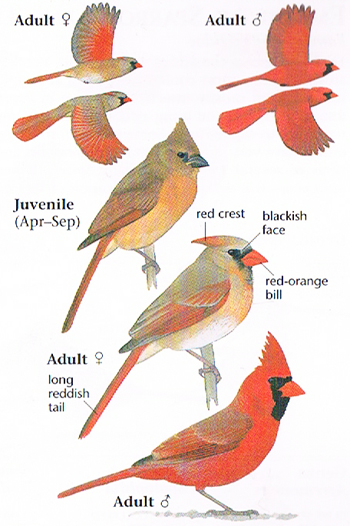
Photo taken from: The Sibley Field Guide by David Allen Sibley
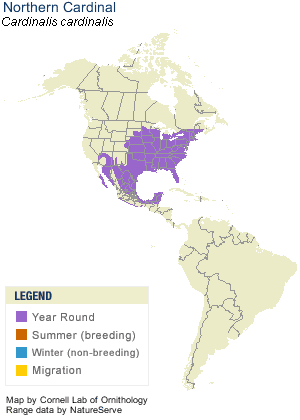
© 2003 Cornell Lab of Ornithology
|
Habitat |
|
Look for Northern Cardinals in dense shrubby areas such as forest edges, overgrown fields, hedgerows, backyards, marshy thickets, mesquite, regrowing forest, and ornamental landscaping. Cardinals nest in dense foliage and look for conspicuous, fairly high perches for singing. Growth of towns and suburbs across eastern North America has helped the cardinal expand its range northward. |
|
Behavior |
|
Northern Cardinals hop through low branches and forage on or near the ground. Cardinals commonly sing and preen from a high branch of a shrub. The distinctive crest can be raised and pointed when agitated or lowered and barely visible while resting. You typically see cardinals moving around in pairs during the breeding season, but in fall and winter they can form fairly large flocks of a dozen to several dozen birds. During foraging, young birds give way to adults and females tend to give way to males. Cardinals sometimes forage with other species, including Dark-eyed Juncos, White-throated Sparrows, other sparrow species, Tufted Titmice, goldfinches, and Pyrrhuloxias. They fly somewhat reluctantly on their short, round wings, taking short trips between thickets while foraging. Pairs may stay together throughout winter, but up to 20 percent of pairs split up by the next season. |
|
Food |
|
Northern Cardinals eat mainly seeds and fruit, supplementing these with insects (and feeding nestlings mostly insects). Common fruits and seeds include dogwood, wild grape, buckwheat, grasses, sedges, mulberry, hackberry, blackberry, sumac, tulip-tree, and corn. Cardinals eat many kinds of birdseed, particularly black oil sunflower seed. They also eat beetles, crickets, katydids, leafhoppers, cicadas, flies, centipedes, spiders, butterflies, and moths. |
Taxonomy
| Kingdom: | Animalia |
| Phylum: | Chordata |
| Subphylum: | Vertebrata |
| Class: | Aves |
| Order: | Passeriformes |
| Family: | Cardinalidae |
| Genus: | Cardinalis |
| Species: | Cardinalis cardinalis |
| Subspecies: | Cardinalis cardinalis affinis |
| Cardinalis cardinalis canicaudus | |
| Cardinalis cardinalis cardinalis | |
| Cardinalis cardinalis carneus | |
| Cardinalis cardinalis clintoni | |
| Cardinalis cardinalis coccineus | |
| Cardinalis cardinalis flammiger | |
| Cardinalis cardinalis floridanus | |
| Cardinalis cardinalis igneus | |
| Cardinalis cardinalis littoralis | |
| Cardinalis cardinalis magnirostris | |
| Cardinalis cardinalis mariae | |
| Cardinalis cardinalis phillipsi | |
| Cardinalis cardinalis saturatus | |
| Cardinalis cardinalis seftoni | |
| Cardinalis cardinalis sinaloensis | |
| Cardinalis cardinalis superbus; | |
| Cardinalis cardinalis townsendi | |
| Cardinalis cardinalis yucatanicus |
Similar Species |
|
Pyrrhuloxias are grayer than female Northern Cardinals and have a more rounded, yellow bill without the black face. Female Phainopeplas lack any redness to their plumage and have much more slender bills.
|
|
Bird Sound |
|
"whoit cheer, whoit cheer, cheer-cheer-cheer; cheer, whoit-whoit-whoit-whoit; wheat-wheat-wheat-wheat", "bir-dy,bir-dy,bir-dy,bir-dy" |
|
Eggs look like this |
|
Photo taken from: ARCTOS Collaborative Collection Management Solution |
